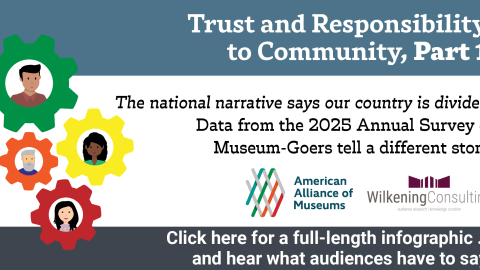
Forecasting is about exploring “fringe futures” as well as more probable outcomes. Part of the art of futures studies is casting your imagination out to the edges of the Cone ofPlausibility, but also knowing when to reel it back in. This week Alliance board member Nik Honeysett, head of administration at the J. Paul Getty Museum, pulls us back into the mainstream, in this response to my recent post on the potential effects of automation on museum jobs.
 |
| Image from Cauldrons & Cupcakes |
Remember Expert Systems? In the 80’s, Expert Systems were going to change the way we worked, technology was going to take over and do our job better. Never heard of them? That’s because everyone got upset and thought they were going to lose their job, oh and there was the tiny issue that they weren’t very “expert”. They went through a rebranding exercise to “knowledgebase” and as a tool to assist us in our jobs.
Technology is replacing jobs, but that’s been happening for centuries, but the number one motivator is for it to provide some kind of return on investment – productivity or reduced costs, but not always an improvement in service. Travel agents are a good example, they’re replaceable by technology because we don’t really need them – one never needed a travel agent to book a holiday, one needed a travel agent to work the system that booked the holiday. Similarly Estate Agents (Realtors) are destined to be replaced by technology, because we don’t really need them either.
Call centers are another sector that, until recently, were being replaced by technology in the form of voice recognition. Like expert systems, this technology is not yet good enough. In fact talking to an automated system is a death spiral of pain and frustration resulting in some form of self-harming, and by “self” I mean the nearest manifestation of said technology. Automated answering systems for companies that pride themselves on customer service are going the way of expert systems, and while the ROI of these may have been about reducing costs, customers are turning away in droves.
So that brings us to the issue of technology replacing jobs in museums where customer service and a sense of the physical and visceral is tantamount. Oh and all those volunteers who are the heroes of our operations including our (customer-facing) visitor engagement. My main question is what ROI calculation would provide a net benefit to replacing a costless employee with a technology investment? Not to mention that most of us don’t have the technology infrastructure, people or money to support this, expertly summarized in the 2012 Horizon Report – Museum Edition: “#2: Funding for technology projects, even those for interpretation and exhibition, continues to fall outside core operational budgets.” And if that weren’t enough of a challenge, try convincing your board that its worth it: “#4: Boards of Trustees and executive management too often do not recognize the importance of technology in generating financial or mission return on investment.”
There’s no question that technology will replace some jobs in some museums, I’m just really skeptical that it will replace a lot of jobs in a lot of museums. To deploy technology in museums requires an existing technology infrastructure and management of the data that the technology is going to replace. I’ll admit that a couple of museums will deploy some kind of interpretive robot soon, just as Seb* says, but that requires a infrastructure and support. For the vast majority of us, it’s much easier to continue with our docent core providing a personalized teaching experience, or issuing and tearing tickets, or…
*Seb Chan, in a comment on the CFM Blog Post “Will You Lose Your Museum Job to a Robot?”









I'd argue it's much more likely that you'd lose your job to an unpaid volunteer (or intern) than a robot. I don't mean to sound unappreciative of the very generous contribution of time from volunteers and docents, but it seems to me that there's a bigger issue here. If customer service is the priority you imply it is, then why are front-line jobs left to unpaid staff?
That's a really good point, Beth. Volunteers definitely shape the economic landscape of museums–Alliance research staff estimate there are about 3 million museum volunteers in the US, compared to about a quarter million paid staff. There has been a lot of discussion about the misuse interns in the paid workplace http://www.nytimes.com/2010/04/03/business/03intern.html?_r=2&pagewanted=all& and how they affect job prospects in sectors like fashion http://www.theatlantic.com/sexes/archive/2013/02/unpaid-internships-are-a-rich-girl-problem-and-also-a-real-problem/273106/ but not enough discussion (to my mind) on how they are used in museums.
I think we (museums), like fashion, suffer from our own sexiness, as a sector. So many people (predominantly young, white, well-educated, per the Atlantic article) that they depress wages since every applicant for a paid position is, in effect, bidding against someone willing to to the job for free.
That doesn't mean, however, that unpaid staff inevitably perform a job, such as customer service, less well than a paid staff member, especially if a museum has a rigorous volunteer recruitment and training program.
Would love others to weigh in on this issue as well…
The truth is that a lot of volunteers can in fact do their jobs as well paid staff. I completed my master's in museum studies last year, but had trouble finding a job other than PT security/visitor services at a large art museum. One day I was needed to work in coat check for an event and situated with a volunteer around my age. I presumed she was an art student looking for experience and connections, but I honestly felt embarrassed when I found out she was a full-time attorney. Museums should not have volunteers and paid staff doing the same tasks. It can make it uncomfortable for both sides.
I am passionate about museums, but have been disappointed that my education and experience has not been more beneficial in helping me secure a full-time permanent position, much less in my area of interest. I almost feel selfish for wanting that job now. I realize this is part of a much larger issue and that countless people are experiencing the same, but it is much too difficult to live off part-time or less than full-time jobs with no benefits, which seems to be the large majority of museum jobs open at this time.
There's no arguing the fact that these days we depend on technology for much of our everyday lives. From the moment our phone alarm wakes us up in the morning to the moment we fall asleep watching a film on our iPad, we are connected to our technology in a wide variety of ways. But as technology takes a firm hold on our leisure time, what about our working lives?